Our production workshops
The legacy of ancestral know-how stimulates creativity and excellence in the production of our French chocolates, fruit jellies and confectioneries.
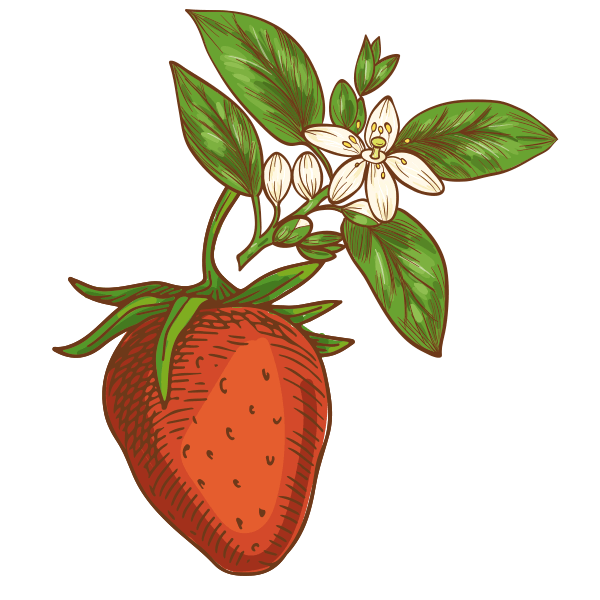
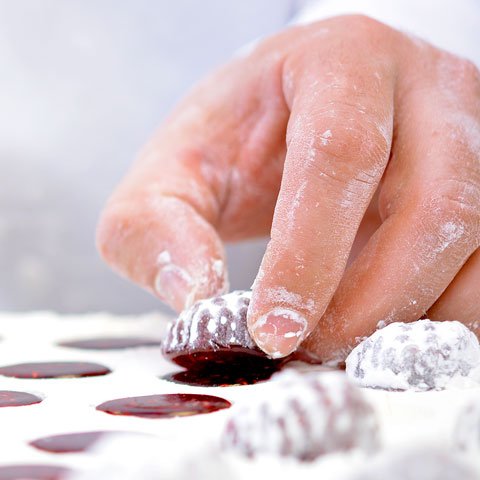
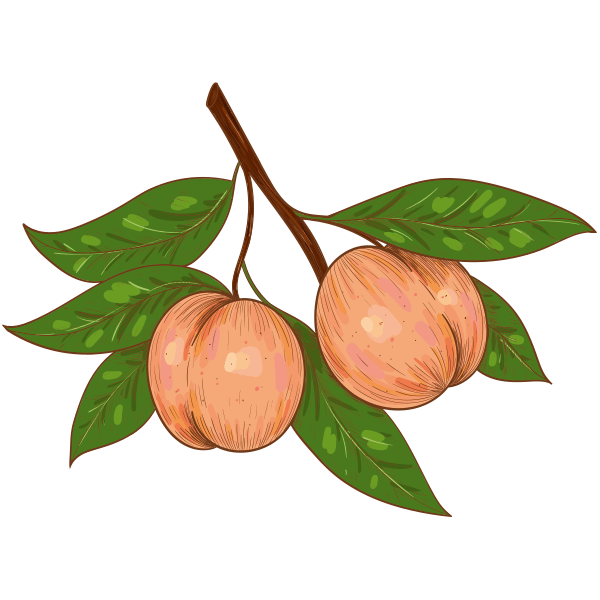
THE FRUIT JELLY WORKSHOP
All François Doucet fruit jellies are meticulously crafted by people who are dedicated to their work.
Let’s take a closer look together at the fruit jelly workshop to find out about the various production stages, through an olfactory trail combining authenticity and modernity.
Le responsable de production planifie la fabrication et le conditionnement des pâtes de fruits en étroite collaboration avec une équipe attentive à chaque détail.
They work closely together, adjusting production in response to needs generated by orders, on the one hand, and available stock on the other.
The various steps in the production process are carefully followed in accordance with best practice in the confectionery industry. The expertise of these people shows through in their well-practised motions and their attention to detail.
STEP 1
Removal from storage and weighing
François Doucet Confiseur buys 75% of its fruit off the branch in Provence (apricot, quince, fig, apple, pear, etc). Grinding, sifting, packing and pasteurization operations are then carried out by local partners. The rest of the fruit comes from other regions, either whole or in the form of puree.
STEP 2
Cooking
Les fruits ou pulpes de fruits sont versés dans le cuiseur. Dès que la vapeur commence à chauffer, l’équipe de fabrication incorpore successivement les autres ingrédients (pectine, sucre, sirop de glucose et acide citrique) en respectant un ordre bien précis tout en surveillant le mélange comme le lait sur le feu. Chacun a son rôle à jouer : la pectine va donner à la pâte de fruits sa texture finale ferme, le sirop de glucose évite la cristallisation du sucre tandis que l’acide citrique va permettre la gélification de la pectine. De délicieuses odeurs de fruits cuits se répandent dans l’atelier de fabrication.
STEP 3
Pouring and drying
When cooking finishes at 79 Brix (the Brix scale is used to measure sugar content), the fruit jelly mixture is taken out and poured into either a slab mould or trays filled with starch containing fruit-shaped impressions. The starch trays filled with fruit jelly mixture are then stored in a temperature-controlled room, where the mixture is left to jellify and solidify as it cools.
STEP 4
Candying and packaging
After solidifying, the residual starch is removed from the fruit jellies, which are then moistened to allow the sugar crystals to stick to the surface. In the case of glazed fruit jellies, they are soaked in a bath of sugar syrup, which will form a shiny film. With their beautiful sugary coatings, these fruit jellies are as appealing to the eye as they are to the palate. They are then packaged by Jocelyne (who has been at the company for 30 years) and her experienced colleagues into cases or bulk cartons, which keep them fresh, before being shipped around the world.
MONITORING
Throughout the production process
At every stage of their production, the fruit jellies are carefully observed, sampled randomly and regularly tasted to guarantee their quality. There are just over 100 fruit jelly recipes at François Doucet Confiseur. As part of a meal, for children’s teatime snacks or as an energy boost for sportspeople, this natural confectionery bursting with fruit and sunshine has a bright future ahead of it.
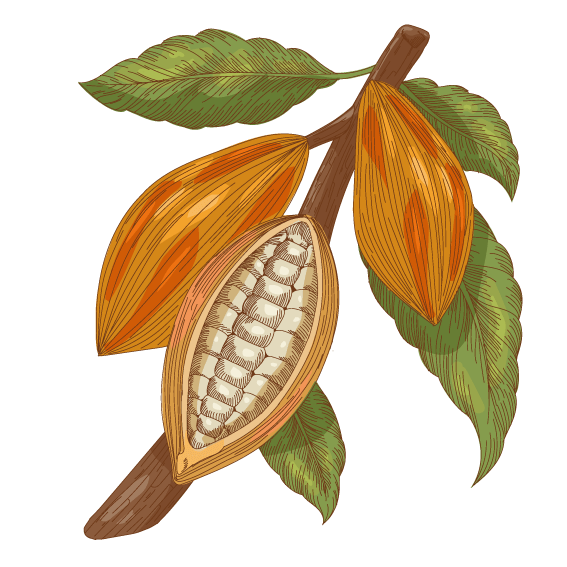
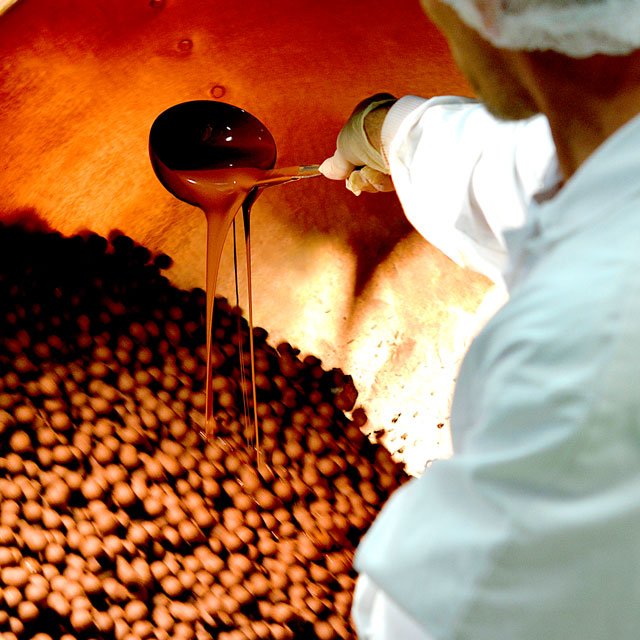
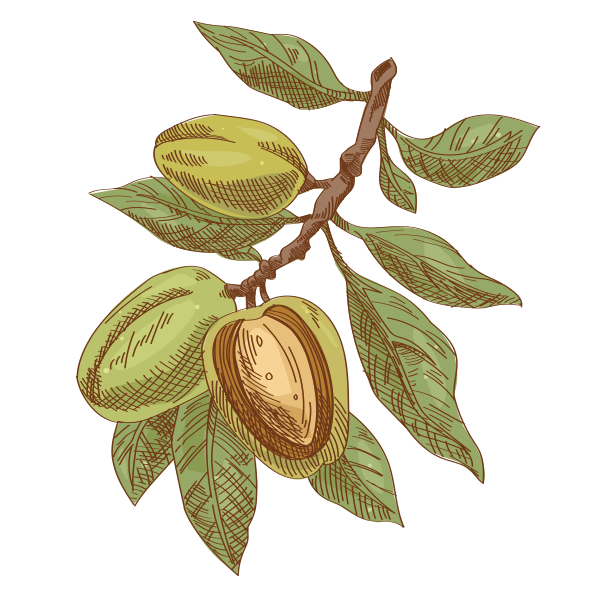
THE COATED CHOCOLATES WORKSHOP
So as not to impair their palettes of delicate aromas, cocoa beans are handled with particular care throughout the journey that takes them from their country of origin (usually in West Africa) to François Doucet Confiseur’s chocolate production workshop.
Nous vous dévoilons les grandes étapes de fabrication de deux produits iconiques : les Pralino Chocolat aux amandes de Provence et les Noisettes du Midi. Alexandre, responsable de l’atelier chocolat et fils de l’une des première salariée de l’entreprise, orchestre d’une main de maître le procédé de fabrication des chocolats aux subtiles compositions.
STEP 1
From the plantations to packaging of the beans
Once the pods have been harvested at full maturity, they are split in half to extract the beans and pulp, and then stacked on banana tree leaves or in wooden crates. Fermentation lasts for seven days and brings out all the precursors of cocoa aromas. Once the pulp has been removed, the beans are then dried in the sun for around nine days before being packaged.
STEP 2
From roasting to the cocoa mass
Before being processed, the beans are sifted to remove all unwanted material. Roasting is performed in rotary ovens at a temperature of around 120°C, for 20 to 30 minutes. This adds grilled notes to the initial aroma. While hot, the shells are removed from the beans, which are then ground at a temperature of above 100°C to obtain the cocoa mass. This is then pressed to extract the yellow cocoa butter and brown oil cake.
STEP 3
Melting the chocolate
In the form of 5 kg bars, the chocolate is placed in melters with a capacity of 500 kg to 1 tonne, to be melted at a temperature ranging from 38 to 42°C.
STEP 4
Roasting of nuts
The almonds or hazelnuts sourced in France are removed from cold storage and then fully roasted according to a specific procedure.
STEP 5
Caramelization
Once they have been fully roasted, the almonds or hazelnuts are coated with a special recipe containing nougatine and herbes de Provence, a task that requires great care, observation and know-how to achieve a perfect result.
STEP 6
Coating
After they have cooled down, the almonds or hazelnuts are placed in a turbine, resembling a spinning top, which wraps the chocolate around these “centres”. During this stage, the operator gradually pours the chocolate over the centres using a ladle, taking care to ensure that it is spread evenly over their entire surface, so as to produce a chocolate coating that is smooth and regular. Here, once again, experience, observation and know-how are required to guarantee a consistently high level of quality.
STEP 7
Finishing and sorting
The coated almonds or hazelnuts are finally sprinkled with icing sugar or cocoa before being sorted on a conveyor belt. This sorting is done to remove any products that may show imperfections and therefore not satisfy the standards of François Doucet Confiseur.
STEP 8
Storage and packaging
Les chocolats sont ensuite stockés dans une salle à une température constante de 18 °C permettant une conservation optimale du chocolat et donc des qualités organoleptiques des confiseries, avant d’être conditionnées par les mains expertes de l’équipe de conditionnement.
